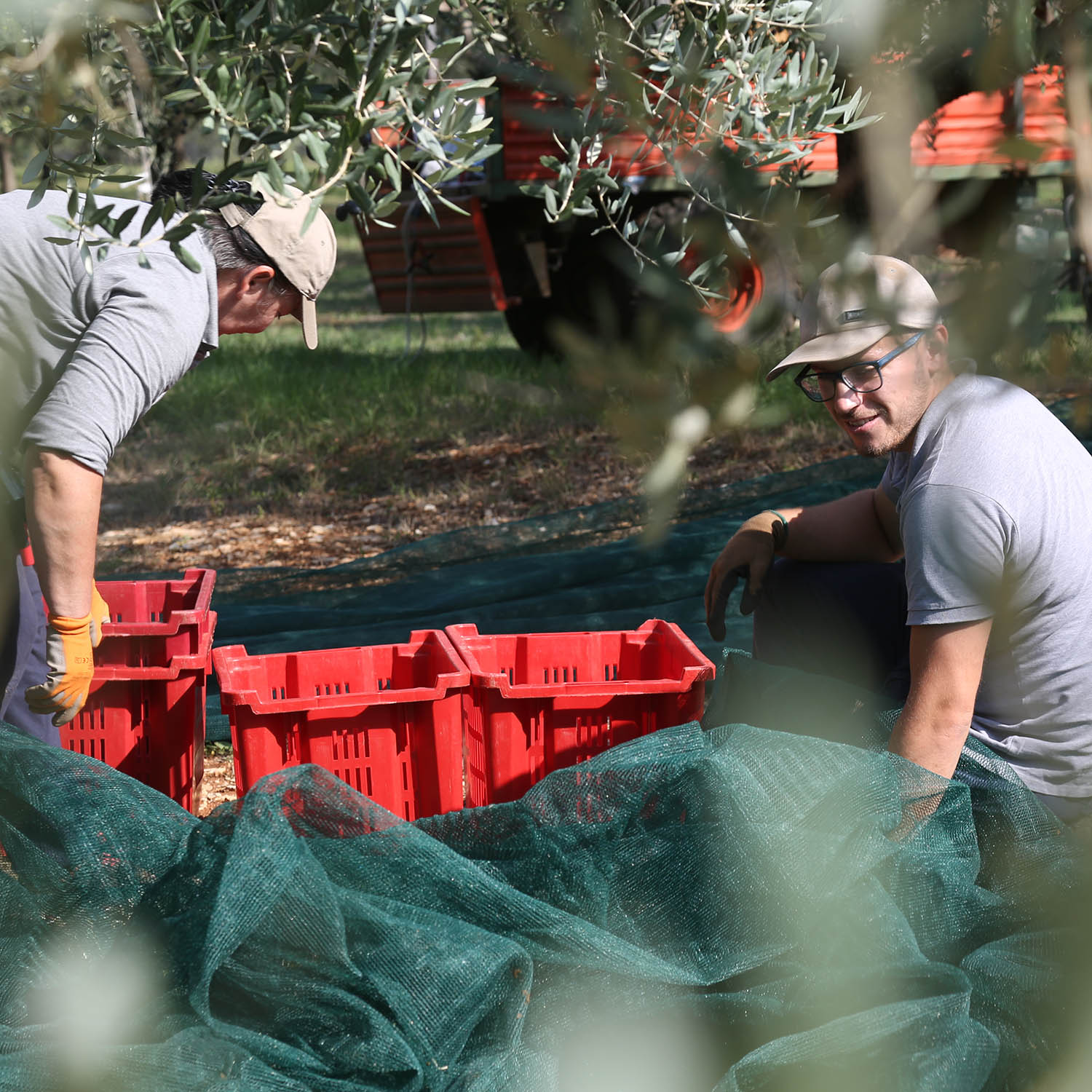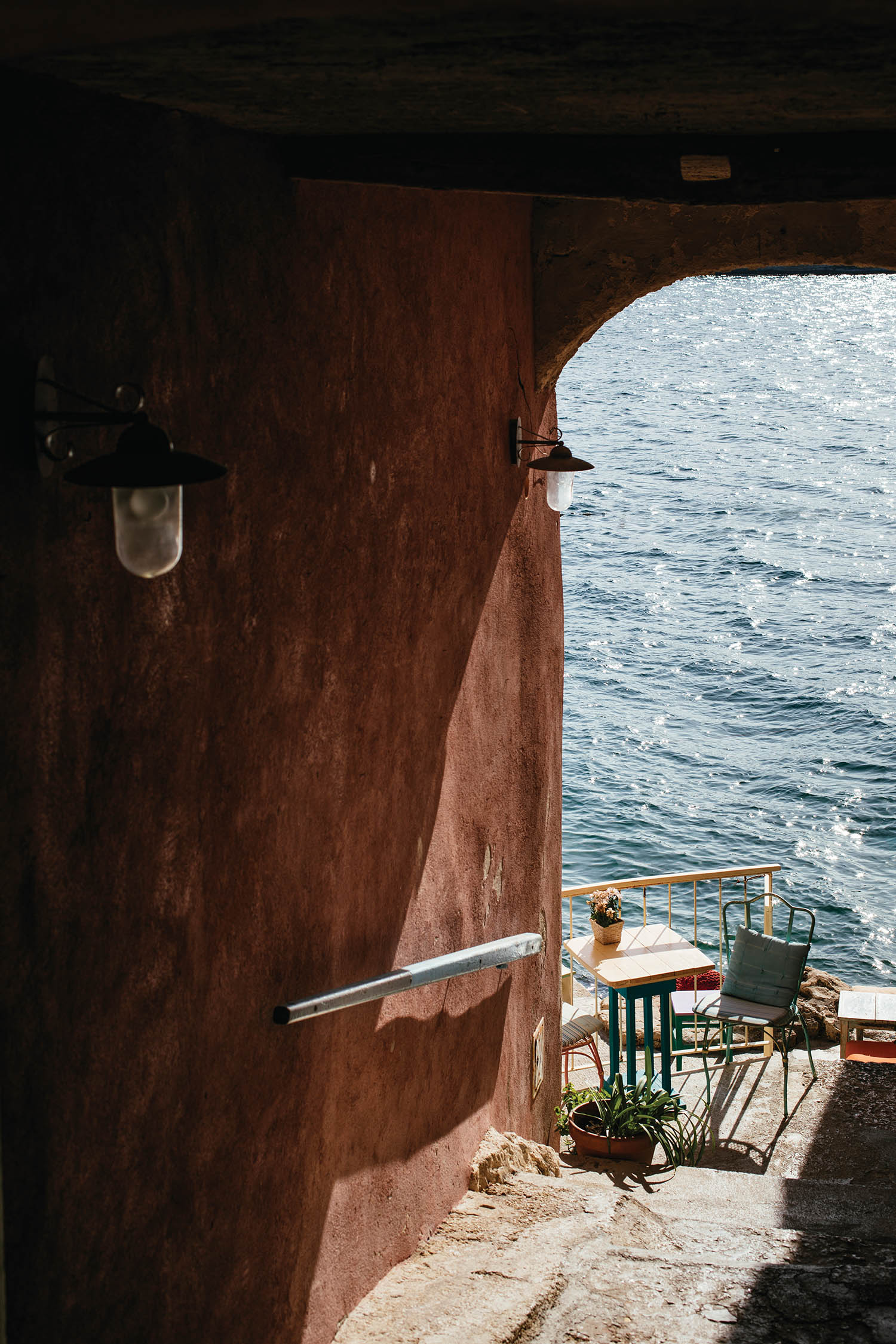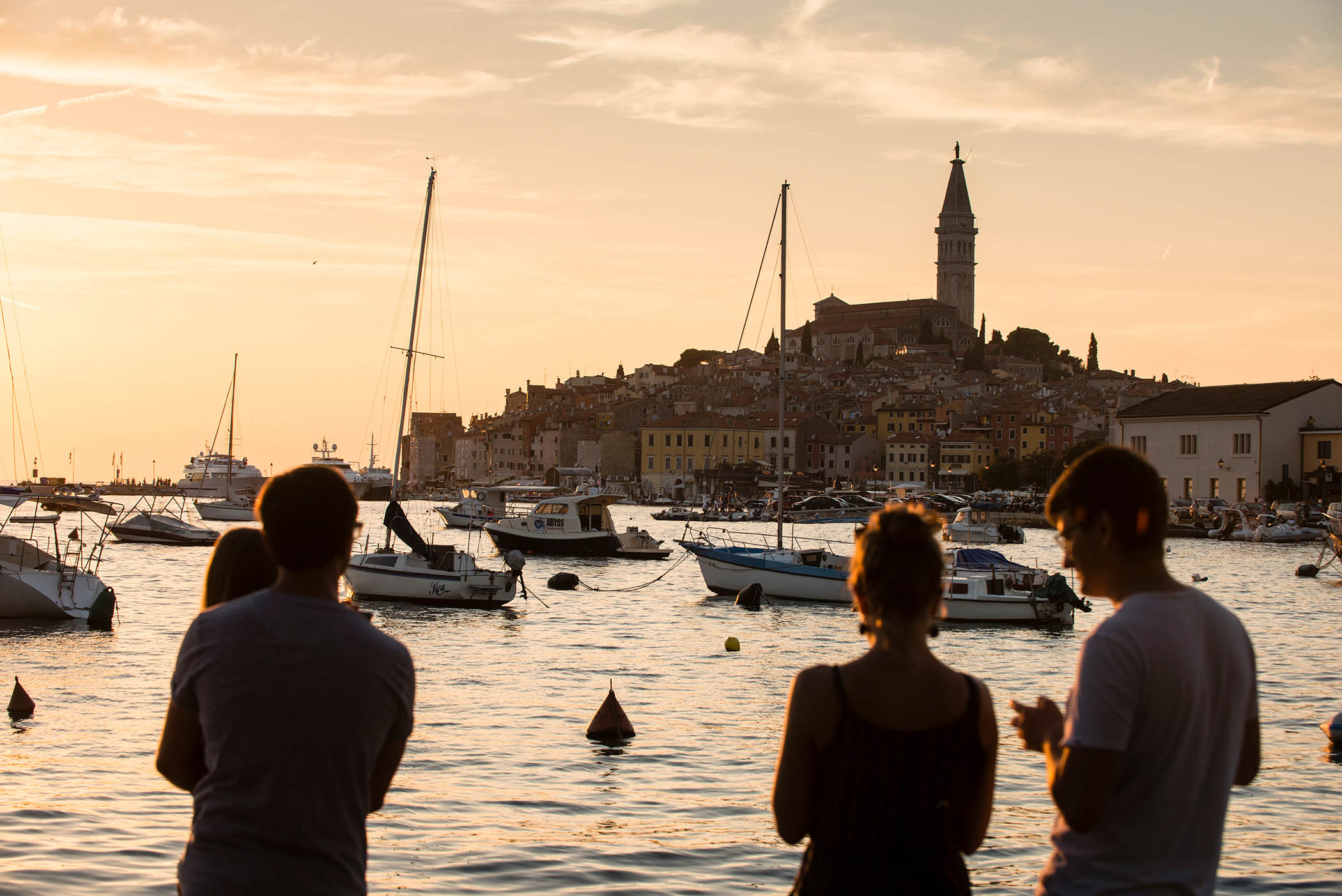Photograph Susan Wright
The first time we took my daughter to Istria, she was five and I was pregnant, and every discovery or decision felt celebratory and vaguely momentous. A ferry was an epic adventure in itself, meeting another little girl who spoke English felt like love, and her learning how to swim (explaining to us, from the pool, “You just have to believe you can float!”) was a revelation. It became a defining holiday for us, partly because it was the last one before our family became four, but also because this sliver of Croatia was so beautiful all our memories were bathed in a pinkish, faded light. Soon after my son turned five, we decided to go back.
This Istrian peninsula is the largest in the Adriatic Sea: a place known for its olive groves, blue waters, zigzagging history, pasta. It came under control of the Austrian empire in the 19th century, then Italy until 1947; then it was part of Yugoslavia before becoming absorbed into Croatia in 1991. In Motovun, a medieval walled town at the top of a steep, car-less hill, a man told us that despite four generations of his family having lived in the same house, military service saw his great-grandfather enlisted in the Austrian army, his granddad fighting for Italy and his father for the Yugoslav army, a fact that had led, it seemed, to a kind of ancestral dizziness. From the vantage point of the walls, and in good light, you can see all four corners of Istria from Motovun’s city gates – below are vague roads and forests once felled for the wood that built Venice. With all the ramparts intact, you can do a complete circuit of the town, upon which 40,000 visitors descend for a week every summer for the film festival, and still have breath for a glass of local malvasia.
Meneghetti, the vineyard down the hill in Bale that produces that glass of malvasia, has slowly expanded to become an elegant hotel, and we trundle past waterparks and signs for Hum (the smallest town in the world) to check in. The approaching road is studded with monolithic abstract sculptures dedicated to some of the world’s great thinkers, each carved whitely in Istrian stone.

Hand-picked harvest: the Meneghetti vineyard is rich in olive trees
Driving along Boulevard World Genius, a road lined with strawberry trees, we call out names as the sculptures emerge from the leaves: Mandela! Einstein! Disney! And then we’re here – Meneghetti Wine Hotel, where 12 acres of vineyards produce 14 varieties of wine, available to try in the outdoor restaurant or around one of their grand swimming pools.
When we first visited Istria in 2019, it was being marketed to tourists as an affordable Tuscany – not only was it close to Italy, with an overlapping food culture, but the climate and produce were identical, and the country not yet an obvious holiday destination for Brits. In the half-decade that followed, however, tourism here shifted sharply to focus on the luxury market, with opulent hotels appearing and, with the introduction of the euro, prices rising, too.
Since 2000, Meneghetti has grown happily to meet that market. While Croatia still attracts mainly German tourists, the guests here are 20% Americans, many of whom drift glamorously past us down to the private beach in white linen and good teeth. Children are welcomed (across from us at dinnertime Croatia’s most famous son, tennis champion Goran Ivanišević, shared homemade pasta with his family) yet somehow a lavender-scented calmness reigns.
It lacks pomposity – the food is beautiful, the sea crystal, stars insane
A highlight of our first trip was a truffle hunt through the Istrian forests – my daughter fondly remembered clambering with trained dogs over the roots of oak trees – so driving through Buzet (home, of course, to the annual truffle festival, where a giant omelette is prepared with more than 2,000 eggs and 10kg of truffle) we stopped off at Prodan Tartufi. On a hill off the main road there’s the family house, and then a chic wooden dining room and a kennel with excitable hunting dogs, then beyond it raw green woodland. My son gamely tries to keep up with the leaping, yipping, delighted dog as it sniffs the earth and suddenly, brilliantly, starts digging. We (by which I mean the dog) find not one but three truffles over the course of a merry hour or so (“Worth a million pounds, probably,” I heard my daughter sniffily inform her brother), which we eat shaved generously over eggs, stuffed in salami and on pasta, the Prodan family later introducing us to truffle-infused chocolate to nibble, gingerly, with wine.
Here in Istria, truffles are less luxury good and more basic seasoning, stirred liberally into every dish, the air slightly thickened by their savoury perfume. In a similar way, that smooth distortion of the meaning of luxury has come to define this area of Croatia – a more affordable tourist experience still remains but requires a little more knowledge. Through Vintage Travel we rented a house in the small village of Višnjan, a place known almost exclusively for containing the world’s (second) most successful asteroid observatory. There is also a single restaurant, selling pizzas the size of the moon. Istria as a whole is a stargazing destination owing to a lack of light pollution – the skies are mad at night, navy and glittering – but Višnjan, we learn, is particularly perfect.
In 2019, their tiny observatory was responsible for over half of all the asteroid monitoring in the world, beaten only by Nasa. We stargaze ourselves, in a more amateur fashion, from the garden of the three-bedroom house, where there’s a sparkling little swimming pool and a circular dry-stone kazun – a cabin containing a barbecue and dining table. The sea is visible from the patio, and sunsets are obscene, the light fluorescent pink on the water.

Quiet moments: tables scattered by the rocks give views over the Adriatic
From Višnjan it’s possible to explore the less luxurious but no less glorious corners of Istria – Pazin Castle, which overhangs a gorge into which the river Pazinčica disappears, supposedly the inspiration for Dante’s description of the Gateway to Hell; superlative ice-cream in the port town of Poreč; even taking a holiday from the holiday by popping into Slovenia. The Tuscanish horizons are peppered with brutalist churches and recent ruins, to keep us grounded. One day we return to romantic, twisting Rovinj, the seaside town famous for its pastel-coloured palazzos, and for being the first place my daughter enjoyed fish.
Hence a pilgrimage up the cobbled streets to Puntulina, where tables are scattered on the rocks by the sea, and Adriatic anchovies are served with pickled onions and chunks of octopus. Between courses we scrabble down the stone steps, where locals lie out on flat boulders turning gently puce. It’s just before dessert (millefoglie, the Italian take on millefeuille, served prettily with berries) when my daughter, dipping her toes into the waves, loses a shoe, and two reddening men must swim in to retrieve it while she squeals dramatically on the rocks.
Though it’s no longer even slightly unexplored as a tourist destination, Istria still contains, in between luxurious distractions, the perfect family holiday. It’s catching up on price with Tuscany, but it lacks a certain pomposity – the food is beautiful, the sea like crystal, the landscape verdant, the stars insane. Despite chasing our memories, we never quite caught up. The places we first met with wonder we visited now with only appropriate appreciation. It was like a little pilgrimage to a time when we knew and expected less. Still, give us another five years and I know we’ll be back.
For information, visit Vintage Travel (vintagetravel.co.uk) and Meneghetti Hotel (meneghetti.hr)
Photographs: Damir Fabijanic; Peter Nitsch

